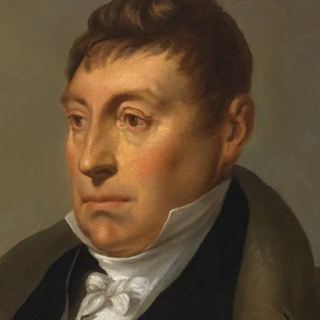Saving Monticello: The Newsletter
The latest about
the book, author events, and more
Newsletter Editor
- Marc Leepson
Volume
XXII, Number 5 May
2025
OUR MARQUIS: In October 2011 I felt honored to do a talk at the Jefferson Library at Monticello on my recently published book, Lafayette: Idealist General. Why a talk on a French General and statesman at the Jefferson Library? That’s an easy one. The 20-year-old Marquis de Lafayette, a major general in the Continental Army, immediately bonded with the 38-year-old Thomas Jefferson, the governor of Virginia, in April 1871 when they met near Richmond during the Revolutionary War.
Both spoke French; they found that they shared an affinity
for the tenets of the Enlightenment; and they became life-long friends.
The men cemented that friendship in 1785 when the Continental
Congress sent Jefferson to Paris to succeed Benjamin Franklin as the U.S. Minister
(Ambassador) to France. Jefferson and Lafayette became confidants as Lafayette
took an increasingly active part in French national
affairs.
 |
| Lafayette, circa 1825 |
As a member of the Assembly of Notables, Lafayette was an outspoken proponent of establishing a constitutional monarchy with guarantees of individual freedom and a republican—versus an unfettered monarchical—government. In other words, what he fought for during the American Revolution against the British.
Lafayette wrote the Declaration of the
Rights of Man and the Citizen in 1789, a seminal document that had many
similarities to James Madison’s Bill of Rights and to the Declaration of
Independence, which Thomas Jefferson was instrumental in writing.
Lafayette’s’ Declaration,
which became the preamble to the French Constitution, in fact, included nearly
the same “all men are created equal” language as Jefferson’s Declaration did.
Fast forward to Lafayette’s famed third
and final tour of the United States when he was treated like a twenty-first century rock star.
Everywhere he went—and he went just about everywhere, visiting all 24 states
from July 1824 to September 1825—crowds gathered by the thousands to honor
the Frenchman who served with distinction during the Revolutionary War at countless
dinners, galas, parades, ceremonies, and other events.
One memorable event took place in
November 1824 when Lafayette and his small entourage paid a visit to an ailing
Thomas Jefferson at Monticello. I described that emotional occasion briefly in Saving Monticello and in this newsletter, and elaborated
on in the Lafayette book.
The Marquis and his party spent ten days enjoying
Jefferson's hospitality and being feted at the University of Virginia. This was
the visit after which Jefferson wrote to a friend that he had to replenish his
stock of red wine after the Frenchman left.
Lafayette stopped by again just before he left for home in August 1825, but stayed only a short time as Jefferson was ill. He died less than a year later on July 4, 1826.
| Bill Barker & Charles Wissinger as Jefferson and Lafayette at Monticello in November 2024 |
UPL & THE MARQUIS: Back in 2011 during the Q&A after my talk, an audience member asked me if Uriah Levy and Lafayette had ever crossed paths. The answer was yes. And their meeting, in 1833 in Paris, had important ramifications for the future of Monticello
Uriah Levy, in the French capital between Navy postings, sought out the famed sculptor David d’Angers and commissioned a full-length marble sculpture of Thomas Jefferson. Then Levy called on the aging Marquis, telling him about the statute and asking to borrow a portrait of Jefferson by Thomas Sully that Lafayette had for the sculptor to use for the image of Jefferson’s face.
During that meeting, it’s likely that Lafyette, who
corresponded with Martha Jefferson Randolph in Virginia, asked Levy to return
the favor by checking check on her, the family, and on Monticello. Levy agreed.
That is one feasible reason why after Levy came home to the U.S., he booked passage on a coach from Philadelphia to Charlottesville in the spring of 1834. When he arrived in Charlottesville, Levy found that Martha Randolph and the family were well, but that James Turner Barclay—who purchased Monticello from the Randolph’s in 1831—was anxious to sell the property.
Soon thereafter, in April 1834, Levy signed a contract with Barclay to purchase Monticello and its 219 acres. The rest is history—the history that I tell in Saving Monticello.
Not to bury the lead, but this tale of Lafayette, Jefferson,
and Levy came to mind because the University of Virginia Press has just
published a second edition of Lafayette: Idealist General in
paperback in conjunction with the two hundredth anniversary of the Marquis’
famed farewell tour
It’s available on the online booksellers and at your local bookstore. For a personally autographed copy, please go to this page on my website, https://bit.ly/BookOrdering. I’ll fulfill your order as soon as I receive it.
EVENTS AND COMMERCE: I have a growing number of events scheduled this spring and summer, most of them for my new book, The Unlikely War Hero, a slice-of-life biography of the extraordinary Vietnam War story of Doug Hegdahl, the youngest and lowest ranking American prisoner held in Hanoi during the war.
I’m also lining up talks, podcasts and other events for the
new paperback version of Lafayette: Idealist General.
Many are speaking engagements for historic
preservation and other groups. Some are open to the public. For details, go to this page on my website: marcleepson.com/events
If you’d like to arrange a talk on The Unlikely War Hero, Saving Monticello, Lafayette, or any of my other books, please email me at marcleepson@gmail.com
To order a
signed copied, go to https://bit.ly/BookOrdering
I also have new paperback copies of Flag: An American Biography; Desperate
Engagement; and The Ballad of the Green Beret.





